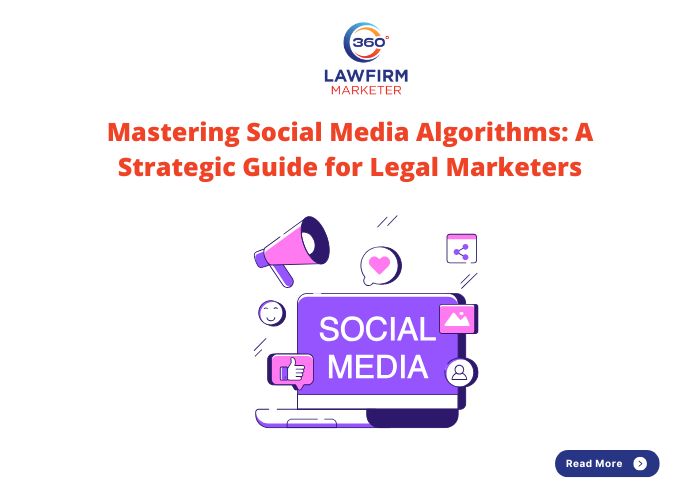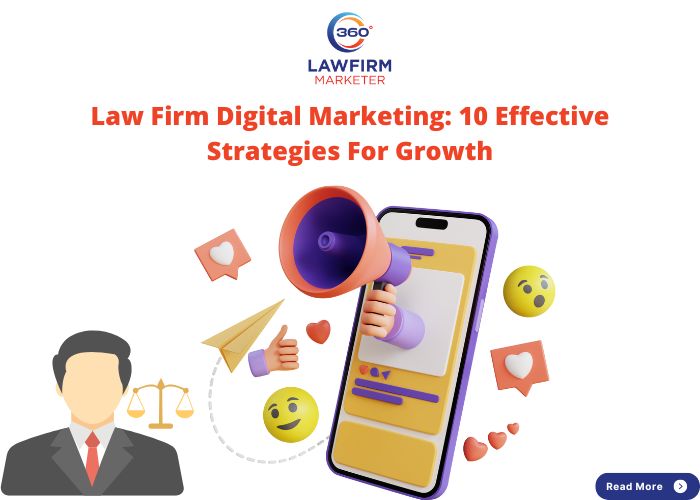Mastering Social Media Algorithms: A Strategic Guide for Legal Marketers

Social media for lawyers is one of the most powerful tools at your law firm’s disposal, but leveraging it effectively takes more than simply showing up. With each platform running on its own ever-evolving algorithm, legal marketers often find themselves asking :
Why isn’t our content reaching more people?
The answer lies in how these algorithms work, and how you can work with them, not against them.
In 2025, there are an estimated 5.42 billion social media users worldwide, and the average person uses 6.83 different social networks per month. With nearly half of consumers (48%) reporting increased interactions with brands over the last six months, your law firm has more opportunity and competition than ever.
In this guide, we’ll break down the major social media platforms – LinkedIn, Facebook, X (formerly Twitter), Instagram, and TikTok and share actionable strategies to help your law firm maximize visibility and engagement.
Reference https://en.wikipedia.org/wiki/Social_media_marketing
What Is a Social Media Algorithm?
At its core, a social media algorithm is a set of rules and data-driven predictions used by a platform to determine what content to show to each user. These systems are tailored to individual behavior, which means every user’s feed is unique.
They prioritize content based on likelihood of engagement and they’re constantly evolving.
Key factors most algorithms consider include :
Engagement
Likes, shares, comments, and other interactions tell the algorithm your content is worth showing.
Time on Platform
The more a user interacts, the more data the platform gathers to refine their feed and the more opportunities you have to appear in it.
Facebook : The Most Complex Algorithm
Facebook’s News Feed uses a four-step model :
- Inventory : The pool of all available posts.
- Signals : Post type, who posted it, engagement, etc.
- Predictions : Estimated likelihood of interaction.
- Relevancy Score : Determines post position.
For law firms, original content that sparks meaningful interactions is key – think thought leadership posts, FAQs, or short videos with tips.
X (Formerly Twitter) : From Chronology to Curated Feeds
X presents content in two timelines :
Following : Posts from followed accounts, ranked by relevance.
For You : Curated posts based on interests and behaviors.
Algorithms here rely on :
Candidate Sourcing : A 50/50 mix of tweets from followed and suggested users.
Ranking Scores : Based on interactions, recency, and engagement.
Filters: Designed to avoid redundancy and promote diversity.
For law firm marketing : Consistency is crucial. Tweet often, use legal hashtags, and engage in trending conversations to stay visible.
Instagram : Machine Learning at Work
Instagram’s algorithm adapts content feeds using :
Your activity : Likes, shares, saves.
Post metadata : Format and engagement.
Interaction history : Past behavior with specific accounts.
Each part of the app (Feed, Reels, Stories, Explore) uses a different algorithm. Reels, for example, are evaluated based on shareability and inspiration potential.
Tip: Law firms should diversify content – static posts for firm updates, Reels for legal tips, and Stories for behind the scenes looks.
TikTok : Interest-Based Discovery
TikTok’s For You page is algorithmically driven and evaluates:
User activity : Likes, comments, views.
Video metadata : Captions, hashtags, sounds.
Device/account settings : Used lightly in comparison.
With the rise of short-form video, TikTok is ideal for simplifying legal concepts, offering fast tips, or showcasing your firm culture.
LinkedIn : The Legal Marketer’s Power Platform
LinkedIn is the platform for law firms :
Over 85% of attorneys use social media for marketing, and LinkedIn leads the charge.
Around 84% of law firms have successfully sourced clients via social media, showcasing its direct value in lead generation.
LinkedIn’s algorithm favors :
Relevance : Aligns with professional interests.
Expertise : Thought leadership and value.
Engagement : Comments, shares, and reactions.
Posts from individual attorneys often outperform company posts, so encourage team participation. Legal advice, industry commentary, and firm milestones perform especially well.
Cross-Promotion Caution: Avoid Algorithmic Downgrades
While it’s tempting to recycle content, platforms penalize obvious cross-posting, especially videos with watermarks from TikTok or Instagram. To stay visible, tailor each post to the platform in terms of format, tone, and length.
How Law Firms Can Adapt and Thrive?
Social media success isn’t just about understanding algorithms – it’s about using that knowledge strategically.
1. Consistency Over Virality
Post high quality, relevant content on a regular schedule. A mix of case studies, legal tips, FAQs, and community updates builds trust and engagement.
2. Encourage Interaction
Ask questions, use polls, and respond to comments. The more engagement your content gets, the more it’s seen.
3. Match Content to Platform
Use short-form video on TikTok and Instagram Reels. Post carousels or in-depth posts on LinkedIn. Repurpose smartly—not lazily.
4. Use Analytics to iterate
Every platform provides insights. Monitor what’s working, when your audience is active, and what gets the most traction.
5. Empower Your Team
LinkedIn favors individuals. Encourage your attorneys and staff to share firm content and their own insights. This dramatically expands your visibility.
Frequently Asked Questions (FAQs)
1. Why isn’t our law firm’s social media content getting more visibility, even though we post regularly?
Posting isn’t enough. Content must align with platform algorithms. Focus on creating content designed to spark engagement – comments, saves, shares.
2. Should we use the same post across all platforms?
No. Cross-posting without adapting format, tone, and visuals can hurt performance. Each platform rewards native, customized content.
3. How important is video content for law firms?
Extremely. Video is prioritized on all platforms. From legal tips to Q&As, use short-form video to build trust and visibility.
4. Should we post from our firm’s page or personal profiles?
On LinkedIn especially, personal profiles drive more reach. Encourage team members to post firm content and original thoughts.
5. How can we tell if our strategy is working?
Use analytics to track engagement, impressions, and follower growth. Refine your strategy based on what works.
Conclusion
No matter the platform, algorithms reward meaningful engagement. Your firm’s content must provide value, spark discussion, and connect with your audience authentically.
With over 5.42 billion users on social media and growing the opportunity is vast. By staying consistent, original, and platform-aware, your law firm can thrive in the digital age.
Need help crafting a strategy?
360 LawFirm Marketer specializes in helping legal professionals grow their digital presence. Let’s talk about how to turn your content into lasting visibility.



